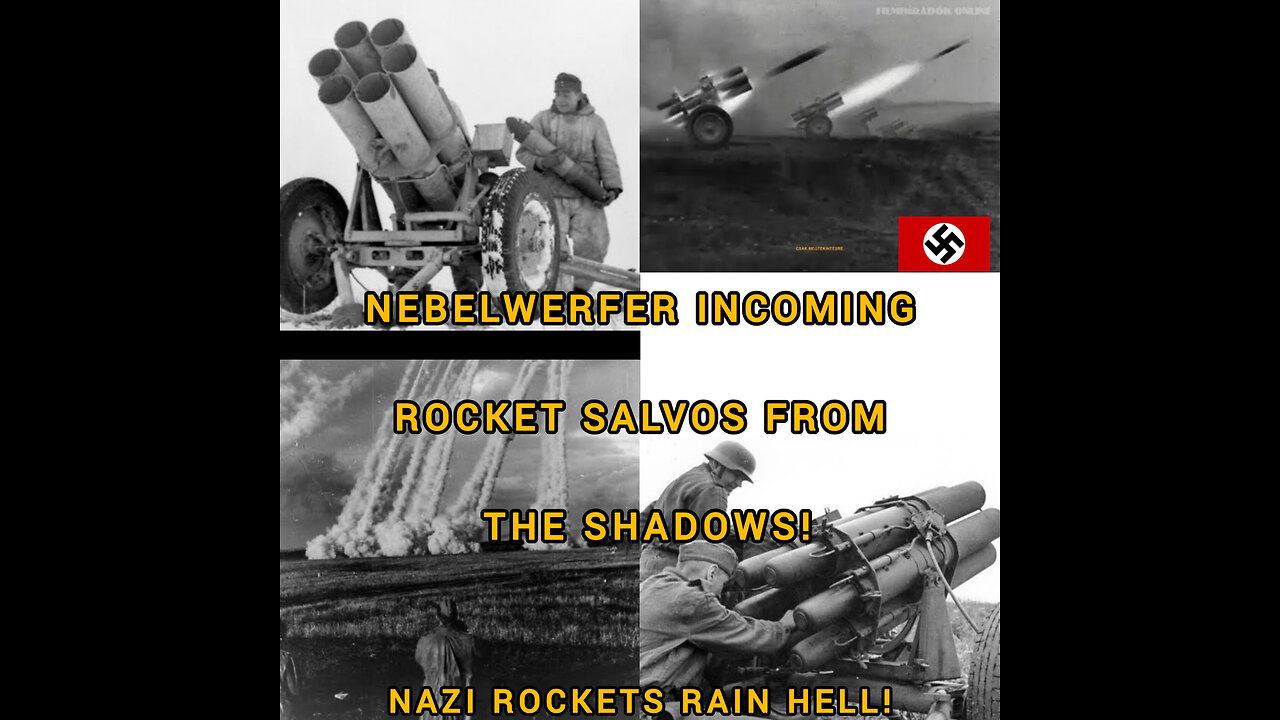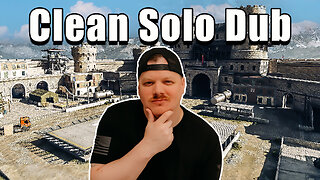Premium Only Content

Nebelwerfer: Germany’s Screaming Rocket Artillery
The Nebelwerfer (meaning “smoke thrower”) was a series of German multiple-barrel rocket artillery systems used during World War II. Originally intended to launch smoke shells, the Nebelwerfer quickly evolved into a powerful psychological and physical battlefield weapon, capable of firing high-explosive rockets that delivered devastating barrages across enemy lines.
The Nebelwerfer series was mounted on both wheeled carriages and half-tracks, and its howling, shrieking sound when fired earned it the nickname “Screaming Mimi” among Allied troops. It was used by Germany’s Nebeltruppen—specialized chemical and smoke artillery units that became more focused on high-explosive delivery as the war progressed.
Major Variants of the Nebelwerfer:
1. 15 cm NbW 41 – The most common early version; a 6-tube launcher mounted on a towed carriage, firing 34 kg rockets with a range of about 6,900 meters.
2. 21 cm NbW 42 – A larger, 5-tube launcher capable of firing massive 21 cm rockets that created even greater blast effects and had a longer range.
3. 30 cm NbW 42 – This version fired 127 kg high-explosive rockets. It had only 6 barrels due to the massive size and was especially devastating against infantry and structures.
4. 28/32 cm Schweres Wurfgerät 40 & 41 – These launched both high-explosive and incendiary rockets, mounted in wooden or metal frames, offering flexibility on the battlefield.
5. Panzerwerfer 42 – A self-propelled version mounted on a half-track (Sd.Kfz. 4/1), allowing for greater mobility and rapid fire-and-move tactics. It was armed with a 10-barrel 15 cm launcher and carried reloads inside.
The Nebelwerfer was used heavily on the Eastern and Western Fronts, especially in Stalingrad, Normandy, and during the Battle of the Bulge. Though less accurate than traditional artillery, its sheer volume of fire and terrifying noise made it a powerful psychological weapon.
-
 1:47:50
1:47:50
Side Scrollers Podcast
1 day agoSide Scrollers Presents: OVERCOCKED
60.6K24 -
 15:01
15:01
GritsGG
15 hours agoSolo Dubulars! Most Winning Warzone Player Dominates Lobby!
7.9K -
 13:12
13:12
The Pascal Show
19 hours ago $3.03 earnedTYLER'S ARREST FOOTAGE MISSING?! Local Police Claim Tyler Robinson Arrest Footage Has BEEN DELETED?!
10.9K2 -
 LIVE
LIVE
Lofi Girl
2 years agoSynthwave Radio 🌌 - beats to chill/game to
273 watching -
 57:44
57:44
TruthStream with Joe and Scott
1 day agoShe's of Love podcast and Joe co-Hosted interview, Mother Claudia and Daughter Juliette: Traveling, Home School, Staying Grounded, Recreating oneself, SolarPunk #514
12.1K1 -
 2:32:42
2:32:42
CAMELOT331
2 days agoCAMELCAST 107 | CECIL SAYS | My Last Stream? Being Kicked Off Youtube
13.6K4 -
 1:16:28
1:16:28
Man in America
18 hours agoThe Study They Tried to BURY: Covid Shots Cause MASSIVE Spike in Cancer w/ Dr. Makis
211K59 -
 2:07:43
2:07:43
Inverted World Live
11 hours agoNASA Finds Strange Rock on Mars w/ Cody Dennison | Ep. 145
103K5 -
 3:29:04
3:29:04
TimcastIRL
10 hours agoTrump Calls For DEATH Of Democrats For Sedition, White House WALKS IT BACK | Timcast IRL
263K166 -
 24:13
24:13
Jasmin Laine
15 hours agoPoilievre Can’t Stop LAUGHING—Liberals IMPLODE After U.S. Ambassador Calls Them Out
31.1K22